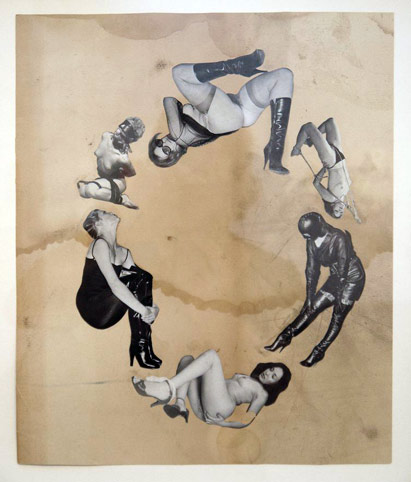One of psychology’s most respected journals has agreed to publish a paper presenting what its author describes as strong evidence for extrasensory perception, the ability to sense future events.
The decision may delight believers in so-called paranormal events, but it is already mortifying scientists. Advance copies of the paper, to be published this year in The Journal of Personality and Social Psychology, have circulated widely among psychological researchers in recent weeks and have generated a mixture of amusement and scorn.
The paper describes nine unusual lab experiments performed over the past decade by its author, Daryl J. Bem, an emeritus professor at Cornell, testing the ability of college students to accurately sense random events, like whether a computer program will flash a photograph on the left or right side of its screen. The studies include more than 1,000 subjects.
Some scientists say the report deserves to be published, in the name of open inquiry; others insist that its acceptance only accentuates fundamental flaws in the evaluation and peer review of research in the social sciences.
The editor of the journal, Charles Judd, a psychologist at the University of Colorado, said the paper went through the journal’s regular review process. “Four reviewers made comments on the manuscript,” he said, “and these are very trusted people.”
All four decided that the paper met the journal’s editorial standards, Dr. Judd added, even though “there was no mechanism by which we could understand the results.”
But many experts say that is precisely the problem. Claims that defy almost every law of science are by definition extraordinary and thus require extraordinary evidence. Neglecting to take this into account — as conventional social science analyses do — makes many findings look far more significant than they really are, these experts say. (…)
For more than a century, researchers have conducted hundreds of tests to detect ESP, telekinesis and other such things, and when such studies have surfaced, skeptics have been quick to shoot holes in them.
But in another way, Dr. Bem is far from typical. He is widely respected for his clear, original thinking in social psychology, and some people familiar with the case say his reputation may have played a role in the paper’s acceptance. (…)
In one experiment, Dr. Bem had subjects choose which of two curtains on a computer screen hid a photograph; the other curtain hid nothing but a blank screen.
A software program randomly posted a picture behind one curtain or the other — but only after the participant made a choice. Still, the participants beat chance, by 53 percent to 50 percent, at least when the photos being posted were erotic ones. They did not do better than chance on negative or neutral photos.
“What I showed was that unselected subjects could sense the erotic photos,” Dr. Bem said, “but my guess is that if you use more talented people, who are better at this, they could find any of the photos.”
{ NY Times | Continue reading }
There’s a good chance you’ve heard about a forthcoming article in the Journal of Personality and Social Psychology (JPSP) purporting to provide strong evidence for the existence of some ESP-like phenomenon. (…)
The controversy isn’t over whether or not ESP exists, mind you; scientists haven’t lost their collective senses, and most of us still take it as self-evident that college students just can’t peer into the future and determine where as-yet-unrevealed porn is going to soon be hidden (as handy as that ability might be). The real question on many people’s minds is: what went wrong? If there’s obviously no such thing as ESP, how could a leading social psychologist publish an article containing a seemingly huge amount of evidence in favor of ESP in the leading social psychology journal, after being peer reviewed by four other psychologists? (…)
Having read the paper pretty closely twice, I really don’t think there’s any single overwhelming flaw in Bem’s paper (actually, in many ways, it’s a nice paper). Instead, there are a lot of little problems that collectively add up to produce a conclusion you just can’t really trust.
Below is a decidedly non-exhaustive list of some of these problems. I’ll warn you now that, unless you care about methodological minutiae, you’ll probably find this very boring reading. But that’s kind of the point: attending to this stuff is so boring that we tend not to do it, with potentially serious consequences.
{ Tal Yarkoni | Continue reading }



















